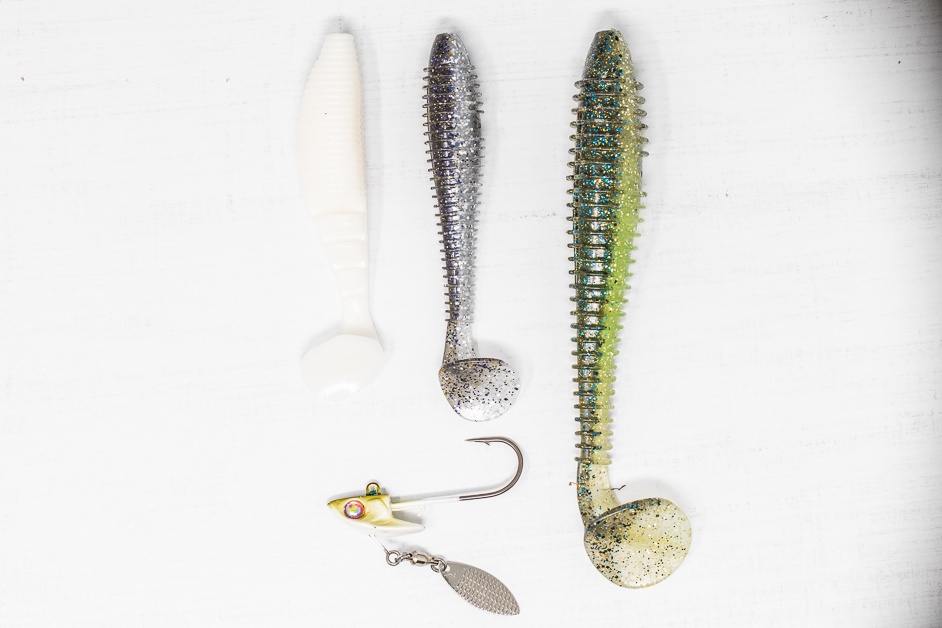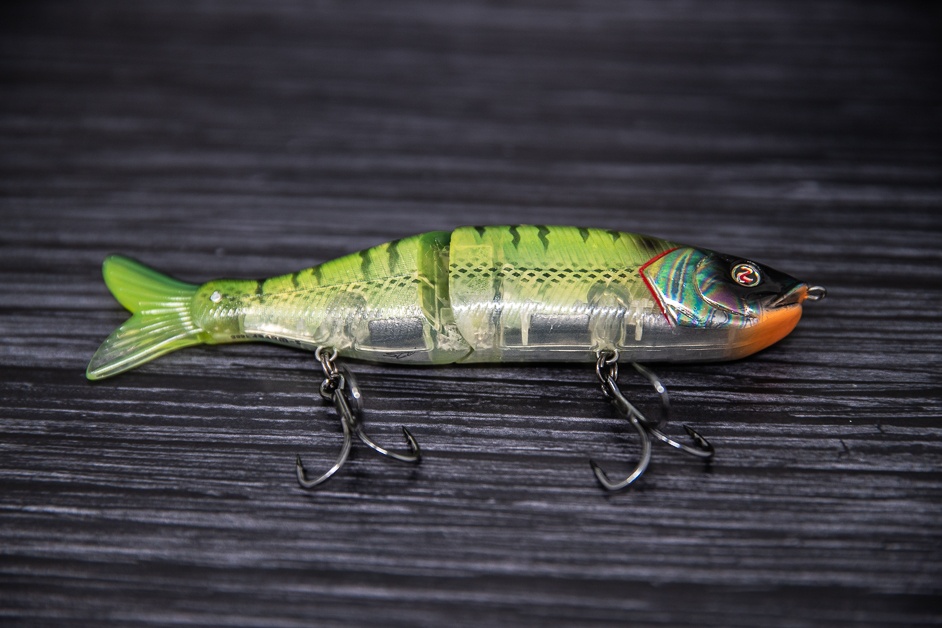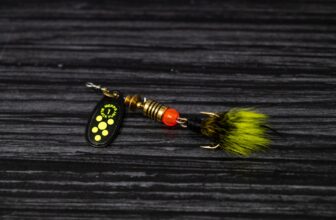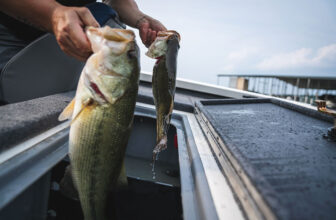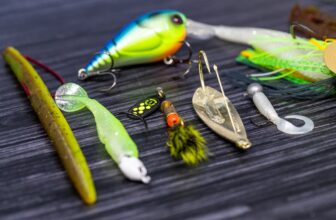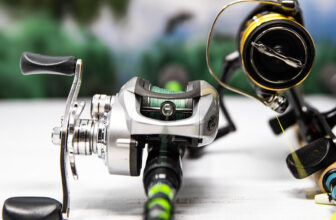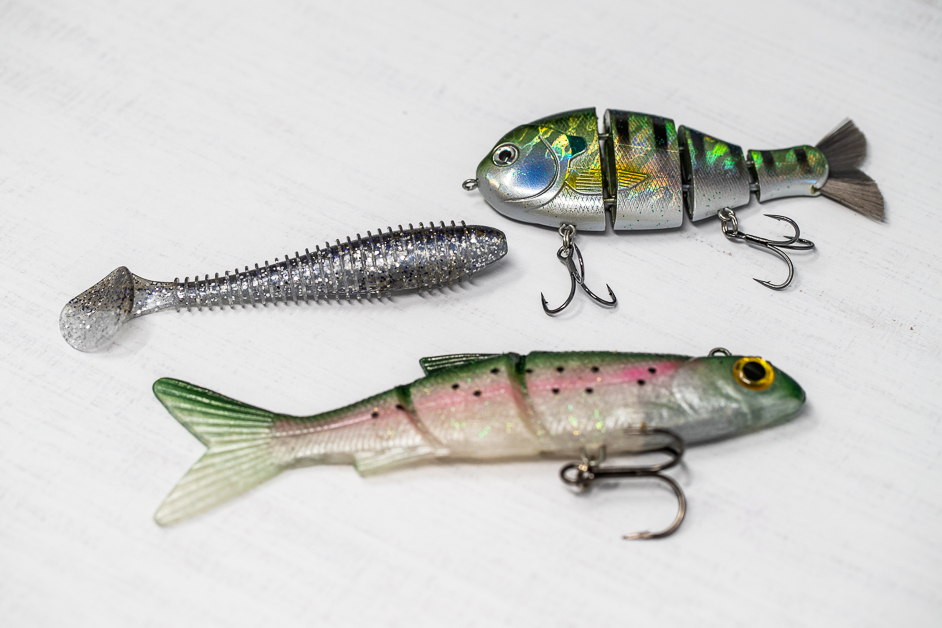
If you are going bass fishing, a key decision will be choosing the right type of lure to use. This guide explores everything that you need to know about swimbait lures including what they are and when they could be useful.
Are you in the process of choosing the right bait for your bass fishing trip? If so, then it’s worth exploring swimbaits. Swimbaits are becoming more popular with bass anglers for a variety of reasons. It has provided people with a way to catch big bass as well as pressured bass. While this technique was originally used in the west it has now spread across America and is largely considered one of the top techniques. There’s a lot to know about swimbaits for bass fishing so let’s dive right in.
What Are Swimbaits?
Swimbaits for bass fishing are artificial lures that can be used in a variety of different conditions. It is designed to respond and act as a bait fish in the water and will mainly be used for freshwater fishing, making it an ideal choice for bass fishers. They can be made of either hardwood or plastic, depending on the type that you choose.
The swimbaits can also be designed to resemble the different species of fish that bass will often prey on. While most will mimic fish, some baits have been designed to mimic everything from turtles to rodents and smaller waterfowl.
They can be separated into three categories that are:
- Hard-bodied
- Soft-bodied
- Paddle tail
Hard Or Soft?
A key consideration is whether to choose a hard or soft swimbait for bass fishing.
Usually, a hard swimbait will have segmented bodies and at least two segments. However, some hard swimbaits will have up to six different segments.
The hard swimbaits can be handcrafted or they might be created by machine. They will typically be cast across large distances before being slowly reeled back in towards the boat. Anglers can use different actions with these hard swimbaits such as changing the speed and stopping or starting the retrieve.
Hard swimbaits are used in certain areas such as where you would utilize a topwater plug or where you want to cover larger areas such as humps and flats. This is where big bass is more likely to be discovered. The larger swimbaits do make quite large splashes. You must keep this in mind as this can disturb and spook the fish that you are trying to attract.
A key benefit of hard swimbaits is that you rip the trebles from light grass without any issues. However, if there is a thick weed cover, then it’s better to use a soft swimbait.
Soft swimbaits also come in a variety of different sizes. They can even just be bodies but will often be fully rigged with hooks that are part of the body. Similar to the hard variety, they are designed to be slowly reeled back in once they have been cast. However, the benefit of the soft swimbaits is that you can let them sink deeper without needing to be concerned about them getting snagged.
A clear benefit of soft swimbaits is that they are designed to feel real to the bass once they are swallowed. As such, you will have more time to set the hook.
What About Tails?
If you are using a soft swimbait, then you also need to think about tails. They can either feature a wedge or boot tail depending on the design. If you choose the wedge tail, then you’ll find that it creates a very subtle movement that is designed to keep the body straight when you are completing the retrieve. In contrast, a boot tail will cause far more water displacement. If you flop the tailback and forth, the tail of the bait will twist, causing it to shimmy. While there is no concrete evidence that one type is better, some fish do seem to prefer this type of movement.
What Are Paddle Tail Swimbaits?
Paddle tails swimbaits are designed as wide gap hooks. They use an offset shank or a screw lock to ensure that the head can be properly secured. Since they have a hollow body design, they are softer. As such, they provide a better hook set when the fish does choose to bite down.
You can also get solid body paddle tails. A big advantage of this type of design is that they are far more durable. Due to this, they will stay rigged for far longer.
Where Should You Use Swimbaits For Bass Fishing?
Regardless of which option you choose, swimbaits are ideal when you are fishing in clear water. A key reason for this is that they are visually orientated. They can also be used in slightly dingier waters however they are not recommended for muddy water.
Swimbaits can also either be used on the surface or as deep as fifty feet. If the swimbait is unweighted then you can use it just underneath the surface whereas weighted one will sink down to thirty feet.
This is a versatile type of bait that will work well regardless of whether you are fishing in cold or warm water. They are often used in tournaments to ensure that you get that one big bite that you need to come out on top.
If you are using swimbaits, then you need to make sure that you do match the sink rate to the conditions where you are fishing. For instance, if you are planning on fishing for bass in deeper waters, then you will need a far faster sinking rate.
Does Size Matter?
Size is something to consider when you are selecting your swimbait. For instance, a larger swimbait will often be more difficult to cast for a traditional bass fishing tackle. Be aware that some of the larger swim baits that can be 8 or 10 inches in length will weigh significantly more than 2 ounces.
As such, these will require swimbait rods that are specifically designed for this purpose. They will often be at least eight feet and use a heavy line with durable guts and gears. You will also need to ensure that you are lobbing the bait rather than casting it out as a normal lure.
If you are using smaller swimbaits for bass fishing, then you will still need to make sure that you have the right gear and setup. 7-foot power rods using 15-pound fluorocarbon are a popular setup that could be worth considering.
Even using a 4 to 5-inch swimbait is going to be significantly different in size compared with the typical baits that are used for bass fishing lures. Size can also help you catch specific types of bass that you would struggle to get with a different design of swimbait.
How Should you Approach Swimbaits for Bass Fishing?
If you’re looking at swimbaits for bass fishing, then it’s important that you understand how to use your swimbait the right way.
For instance, you need to make sure that you know if your bait is designed to float or sink. If the bait floats, then you need to use it as a topwater lure. This will ensure that it looks like a dying fish that is floating on top of the water and swimming slowly across the surface.
If you are using a sinking switch bait then this can either be used to go deeper in the water column. Alternatively, you can drag it along the bottom of the surface. This is going to depend on where the bass is according to your electronics.
You need to think about the color of your swimbait too. For instance, you can consider choosing swimbaits that are designed with brighter colors that resemble the prey. This is going to help ensure the lure flashes the bass underwater, drawing their attention. You will need to make sure that you are aware of the different colors of the natural prey so that you can guarantee that your swimbait is indistinguishable.
Do be aware that bass can follow these swimbaits for quite a long time. It’s not uncommon for them to follow them right to the boat where you are waiting. As such, you need to ensure that you are as small as possible to avoid being noticed. Make sure that you are thinking about the environment including the time of day and whether it is cloudy or overcast. You might want to position the boat so that the sun is in your face. In doing so, you can eliminate the issue of your silhouette on the water. You might also want to consider avoiding bright or shiny clothes. This could distract the fish that are getting close to the boat.
We hope this helps you understand everything that you need to know about swimbaits for bass fishing. Ultimately, these baits can be incredibly useful and could be the tool you need to ensure that you are successful on your fishing trips. It’s just a case of choosing the right swimbait for the individual fishing setup.


